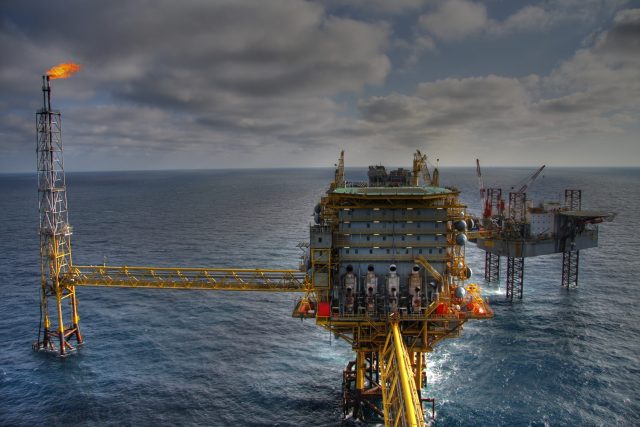
The European Union’s oil production has been declining dramatically in recent decades and dependence on imports of oil and oil products has reached an all-time high in 2022. The EU only manages to produce less than 3% of its oil needs. The same 3%, on the other hand, puts it in last place as a region in the world’s top oil producers. Over the past two decades, the EU’s oil production capacity has fallen to around 50% due to strict environmental legislation and the switch to natural gas.
Within the EU, the top oil producers differ from the top suppliers of oil products. In the first category of oil producers, Romania ranks third, but in the second, it is far behind, at the bottom of the ranking. According to experts, Romania’s problem is its lack of refining capacity, where it has lagged far behind in recent decades. From its heyday from the late 19th century to the 1930s, when it was the world’s fifth largest oil exporter thanks to its own production, it went through the massive losses of the Second World War caused by the German occupation and a revival of the oil industry during the communist years, when massive investment was made in building refining capacity. Today, Romania still extracts only 3 million tonnes of oil and has less than half the refineries of the communist era.
Italy, one of Europe’s top oil producers
According to Eurostat data for 2022, recently released, Italy is the top European oil producer with 4.5 million tonnes, followed by Denmark – 3.2 million tonnes and, just behind, Romania – 3 million tonnes. In terms of petroleum products – including petrol and diesel, but also solvents for the chemical industry – the top-ranking country is Germany, which processed almost 100 million tonnes. Italy is also in second place, with 74.6 million tonnes of oil equivalent. Next is Spain – with 63.4 million tonnes and the Netherlands with 59.6 million tonnes. Romania is in the second part of the ranking, which includes countries producing less than 20 million tonnes of oil products.

According to Eurostat data, although oil prices have risen since the outbreak of the war in Ukraine, EU oil production has continued to fall and the value of imports has soared. Compared to 2021, EU oil production in 2022 is down 7.4% to a historic low of 16.3 million tonnes. At the same time, imports reached a new historic high of 97.7%, after falling sharply to 91.6% a year earlier, reaching a three-decade low. EU crude oil production has been declining since 2004, when it peaked at over 40 million tonnes. In percentage terms, that’s a drop of around 60 percent in 20 years. According to Energy Institute 2022 data compiled by Visual Capitalist, there are several reasons for this decline, including stricter environmental regulations adopted at EU level and a shift to the predominant use of natural gas. While crude oil production has declined, the same has not been true for oil products coming out of European refineries. 544.3 million tonnes of oil equivalent were processed in EU refineries in 2022, up 4.5 percent compared to 2021. The EU imported 479.6 million tonnes of crude oil in 2022. But Member States also bought oil products. And most of these imports came from Russia – 88.4 million tonnes, Norway – 54.1 million tonnes, the US – 48.3 million tonnes, Iraq – 37.2 million tonnes and Kazakhstan – 36.6 million tonnes.
US, one fifth of total world oil supply
According to the Energy Institute, this trend of declining oil production cannot be seen in the world’s major producers. The US, which is the largest producer of crude oil in 2018, was producing a record 18 million barrels per day (equivalent to 2.6 million tonnes) in 2022. With this amount, the US comes in with about a fifth of the world’s total oil supply. Following the US is Saudi Arabia – with 12 million barrels per day, and in third place – Russia, with 11 million barrels per day. Together with Canada and Iraq, which produce 5.6 million barrels/day and 4.5 million barrels/day respectively – the top five players in the world oil market supplied more than half of total global demand. The United Arab Emirates, Iran, Brazil, Kuwait and China supply a further more than 20% of global oil demand. Global production from these 10 market giants increased by 4.2% in 2022 compared to 2021.
Oil imports will increase in Romania
According to data from the European Institute of Statistics, Romania’s crude oil production is expected to decrease by 6% in 2022 compared to the previous year. The downward trend in production is also mentioned by the National Strategy and Forecasting Commission in Bucharest, which further estimates a decline in Romania’s oil production between 2023 and 2026, at an average annual rate of 2.2%, due to the natural decline of deposits and the non-development of production capacities. At the same time, specialists in Bucharest also claim that oil imports will increase over the same period, at an average rate of 4.1%.
This percentage seems implausible if we consider that Romania’s oil imports in 2022 increased by 27% compared to the previous year. The total amount of oil imported was 8.9 million tonnes, practically three times the production. After the outbreak of war in Ukraine and the embargo on Russian oil, one of the most important sources of Romania’s oil and petroleum product imports, the raw material for the three remaining refineries processing crude oil on Romanian territory comes from Kazakhstan and Azerbaijan. Almost 40% of the quantities processed in these refineries come from Kazakhstan alone.
Only 4 out of 34 refineries still operating in Romania
At the time of the December 1989 Revolution, Romania had ten refineries processing 34 million tonnes of oil. As the processing capacity was much higher than the extraction capacity, but also higher than the domestic consumption needs, during the communist period, the Romanian state massively imported oil, especially from Iran and Iraq, and exported oil products further afield. With the fall of the Ceausescu regime, in the period of major privatisation that followed, four of the ten refineries remained. In the last three decades, they have come under foreign ownership. The first to invest in oil in Romania, in 1995, was the Russian company Lukoil, which also took over the Petrotel refinery. This was followed by the privatisation of Romania’s largest refinery, Petromidia Năvodari, which, after a series of changes in ownership of the company that originally privatised it, came to be controlled by the Kazakh state oil and gas company, KazMunayGaz, and finally by OMV, the Austrian state company that took control of the last Romanian state company in the field and, with it, the Petrobrazi Ploiești refinery. The fourth refinery in Romania – Vega Ploiesti – belongs to the same corporation that also owns Petromidia Năvodari. Vega does not refine oil, only by-products from Petromidia. While the first three refineries produce gasoline and diesel, Vega produces mainly bitumen, but also liquid heating fuels and other petroleum by-products.
With a refining capacity of almost 6 million tonnes per year, Petromidia Năvodari is one of the largest refineries in the Black Sea area and provides about 40% of Romania’s refining capacity. It mainly refines oil from Kazakhstan, with the support of the majority shareholder of the owner company, which also has a fleet of tankers that deliver oil across the Black Sea. With 150 years of experience in oil extraction, Romania has had some resounding successes in the field, but also some decline. In 1857, Romania was the first country with oil production recorded in official international statistics at 275 tonnes, ahead of the US. Romania also built the first commercial oil well and Bucharest was the first city in the world to be lit by kerosene. In the interwar period, it was the world’s fifth largest oil exporter.



 Subscribe
Subscribe